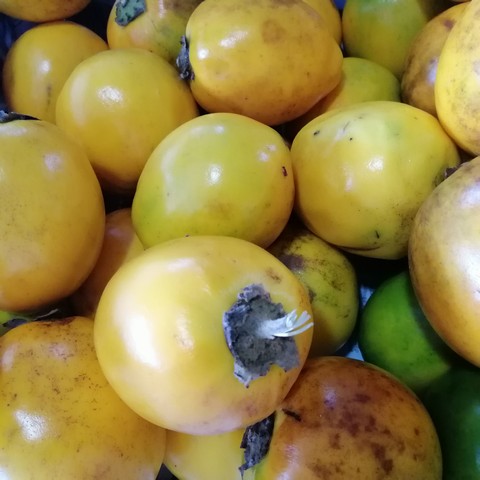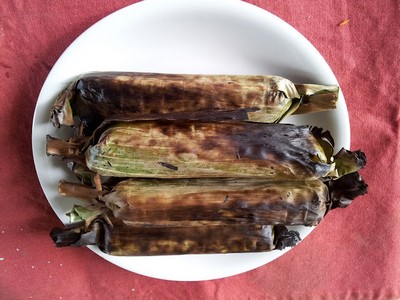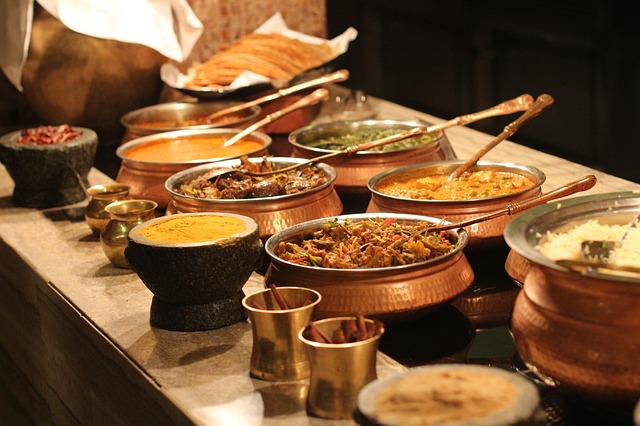When it comes to preparing traditional dishes, perhaps the only time we came across them is during festive season or when we dine in restaurants specializing in preparing traditional food.
In the era of modernisation, preparing and consuming traditional food has becoming increasing rare as more people opt for convenience foods.
This is because convenience ingredients are somehow commonly found anywhere and sadly it is slowly replacing traditional foods.
Aside from that, convenience ingredients are useful as it cuts down the time for food preparation. By using this type of foods, it can shorten the time to produce the traditional dishes.

Food is more than as a mean of survival, as it is an important component in culture and tradition.
As a connecting tool, traditional food is used to express the identity of a community through cuisine.
However, it the age of modernization and technology, it may risk to become obsolete for those in the food industry and business selling traditional food resist to changes.
As a result, their products might become less popular and lucrative and risk becoming inefficient, outdated, and non-competitive in the modern consumer landscape.
In today’s globalized market, innovation and technology are the keys to growth for food businesses to evolve rapidly as well as one of the best ways to preserve culture and tradition.
Keeping up with modern demands
Food innovation can be defined as the development and commoditization of new food products, processes, and services.

These days, many companies as well as small and medium entrepreneurs (SMEs) has taken the initiative to integrate innovation into their food.
Rather than forgo the importance of tradition, many has taken pride in their histories and try to find a way to maintain similar traditional techniques, products and facilities that have been a part of their brand for a long time.
The Malaysian Agricultural Research and Development Institute, Sarawak (MARDI) is among one good example in introducing food innovation by using traditional ingredients to produce products that can feed into modern demands.
Among some of their inventions include producing terung asam or the Sarawak sour brinjal based products into several products such as drink cordial and jam.

Aside from that, MARDI Sarawak has also product dabai-based products such as mayonnaise, fruit juice, puree, chips as well as dipping sauce.
Aside from that, MARDI Sarawak has also come up with ways to produce products from Bario rice such as pre-mixed flour, kek lapis or layered cake and also snack bars.
By keeping in pace with current trends and meet modern demands through innovation, businesses will gain the capital to preserve the most valued aspects of their heritage.
This goes to show that innovation can take place effectively without overshadowing the importance of tradition and heritage.
However, it is still undeniably difficulty and challenging to innovate while at the same time trying to keep traditions untouched, especially those whose products are defined by a specific heritage.
Yet, innovation is still important to protect these traditions in the long-term and while meeting modern demands.
Easy convenience
Innovation has allowed traditional food and ingredients to become more accessible and convenience for people to get them.
For instance, MARDI Sarawak has also integrated technology into food innovation for processing frozen Sibu’s pulut panggang (grilled glutinous rice) as well as packaging of umai (ceviche) so that it has longer shelf time.

To prepare them, it consists of raw ingredients and involves intricate steps to maintain the authentic and originality taste of the food.
These days however, we can see it being sold in supermarket and can be enjoyed by everyone not anytime of the year.
Again, this is showing how innovation can help promote traditional dishes to people outside the community that typically makes them.
In addition, as the premade products closely resembles the traditional products, it helps the communities adapt in the modern era.
Appreciative of traditional dishes
Food innovation allows people to learn and appreciate their traditional food even more as they realise that the intricacy of the steps in preparing traditional dishes.

This is especially true for those living in urban areas as they have the limitation of having access to get the original ingredients.
Many companies have come out with innovations so that the tradition can be continued that suits the new generation by stepping up product development and expanding their offer of convenience products and services. On the other hand, innovation on food does encourage the young generation to practice cooking traditional dishes as they are curious of traditional food, thus this motivates people to preserve and appreciate traditional dishes more.






